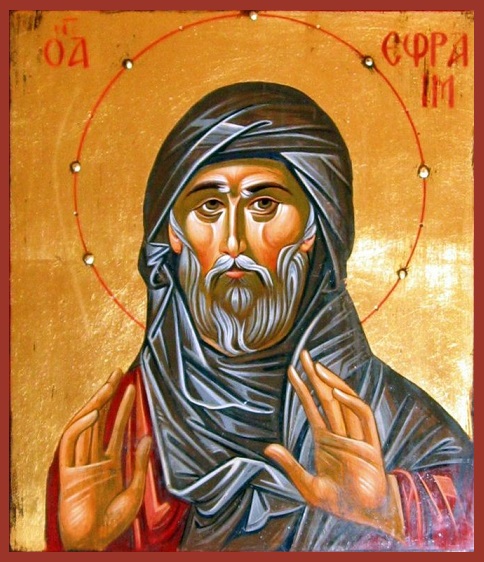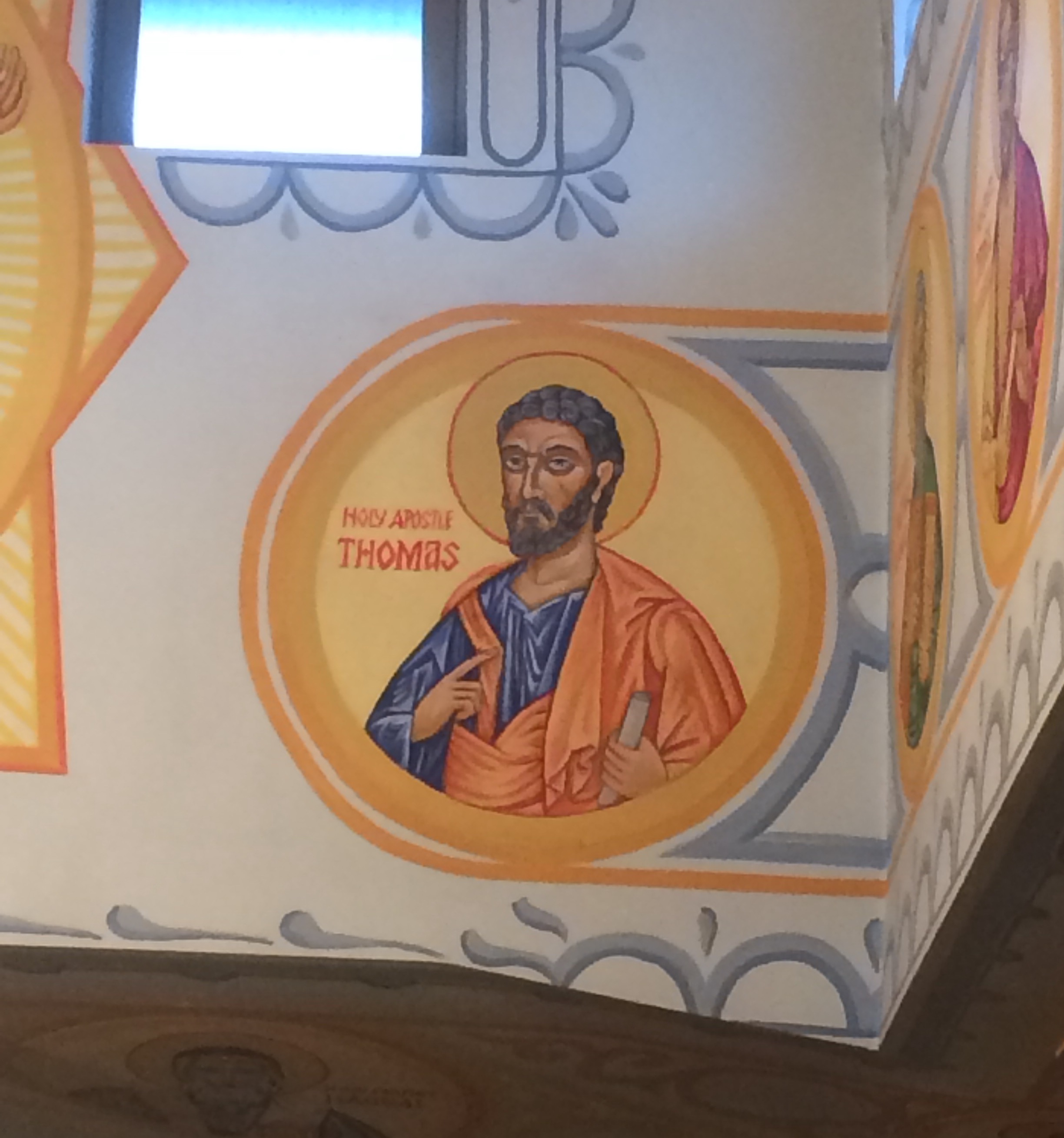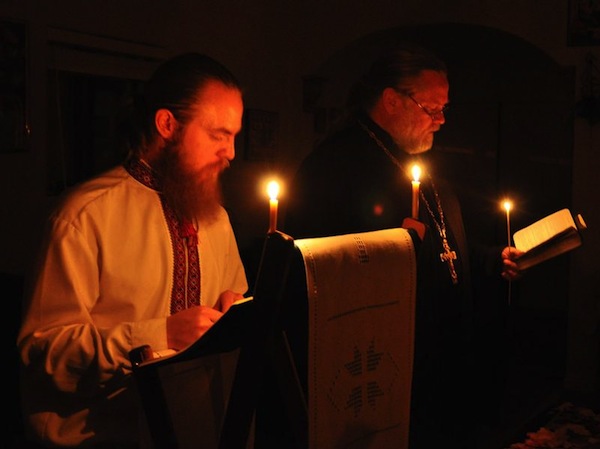Trisagion Films
 One of my new favourite websites is Trisagion Films. On this website you find lots of high qualify videos on a wide range of videos concerning Eastern Christianity, such as St. Ephrem and the vesting prayers prior to Divine Liturgy:
One of my new favourite websites is Trisagion Films. On this website you find lots of high qualify videos on a wide range of videos concerning Eastern Christianity, such as St. Ephrem and the vesting prayers prior to Divine Liturgy:
"We are travellers…not yet in our native land" – St. Augustine
 One of my new favourite websites is Trisagion Films. On this website you find lots of high qualify videos on a wide range of videos concerning Eastern Christianity, such as St. Ephrem and the vesting prayers prior to Divine Liturgy:
One of my new favourite websites is Trisagion Films. On this website you find lots of high qualify videos on a wide range of videos concerning Eastern Christianity, such as St. Ephrem and the vesting prayers prior to Divine Liturgy:
 If you ever visit an Eastern Catholic or Eastern Orthodox parish, you’ll find them adorned with many icons and, as I’ve mentioned in previous posts, these icons are dense with meaning.
If you ever visit an Eastern Catholic or Eastern Orthodox parish, you’ll find them adorned with many icons and, as I’ve mentioned in previous posts, these icons are dense with meaning.
At one point last year I brought a friend to my parish and we spent some time looking at the icons. He noticed that in the icons of the four Evangelists (Matthew, Mark, Luke and John), each of them is holding a book, symbolic of the Gospel attributed him. He then noticed the icon of St. Thomas and asked a question which caught me off-guard:
“Is the scroll he’s holding a reference to the ‘Gospel of Thomas’?”
I had never considered that association before! You see, the “Gospel of Thomas” is a non-Canonical work from the mid 2nd Century and was rejected by the Catholic Church. Bishop Eusebius from 3rd Century described it as “the fictions of heretics”. Given all that, it’s rather unlikely that the scroll in Thomas’ hand in a Catholic Church is a reference to a heretical work of antiquity!
So…what does the scroll in the Apostle’s hand represent? In Eastern iconography, a scroll represents holy wisdom and indicates that the person preached and held the rank of apostle.

I never thought that going to Matins would generate so many blog posts! So…today I sat next to this icon of the Nativity:
In the centre of the icon is Mary the Theotokos, with the infant Christ in a manger, together with some animals (“The ox knows his owner, and the donkey his master’s crib” – Isaiah 1:3). These figures are not in a stable, but in a cave, which reflects the Eastern tradition as well as the practice of the time for keeping animals. Above the cave are the other well-known nativity characters: angels, shepherds, and wise men following the star.
However, what I didn’t understand were the scenes depicted on the bottom-left and bottom-right corners of the icon. In the bottom-left we see St. Joseph sitting by himself with an odd look on his face and in the bottom-right there’s an illustration of what looks to me like an infant baptism taking place. What do these scenes represent?
 Why do Eastern Christians (both Catholic and Orthodox) say “Memory Eternal” in reference to those who have died?
Why do Eastern Christians (both Catholic and Orthodox) say “Memory Eternal” in reference to those who have died?
I thought we’d head back to eastern chant for the next few Mondays. Here’s the “Christ is risen!”:
Christ is risen from the dead,
trampling down death by death,
and on those in the tombs bestowing life!
Last night, the Eastern Orthodox Young Adult group in San Diego had their monthly meeting, led by Fr. John Strickland. The discussion that evening focused on the differences between Catholicism and Orthodoxy. I attended the evening, together with some of my Eastern and Western Catholic friends and I’m very pleased to report that it was a friendly and respectful discussion between brothers and sisters in Christ.
As you might expect, the subject of the Eastern Catholic Churches came up. To make up for whatever was lacking in my explanations, below is a link to an Ancient Faith Radio interview of Father James Babcock, an Eastern Catholic priest in Placentia:
“Let us love one another that with one mind we may confess…
the Father, Son and Holy Spirit, the Trinity, one in essence and undivided.”
– Liturgy of St. John Chrysostom
A very short post today. I just wanted to share a little “ah hah!” moment I had recently.
A little while back I went to vespers at an Eastern Orthodox parish. The format of the service was almost identical to that of my Eastern Catholic parish. The only real differences were alternative melodic forms and slightly different English translations.

During my visit I noticed something about the translation of one of the psalms. Several times Israel was referred to in the masculine form, “him”. This rather surprised me since I typically think of Israel as feminine, the people to whom God has espoused Himself and which, under the New Testament, flowers into the Church, the Bride of Christ.
…I will make a new covenant with the house of Israel and the house of Judah, not like the covenant which I made with their fathers…which they broke, though I was their husband, says the Lord. – Jeremiah 31:32
After Vespers a few of us were talking to the priest and I raised this question. We agreed that Israel was probably referred to using the masculine gender to highlight the relationship of sonship between God and Israel:
And you [Moses] shall say to Pharaoh, ‘Thus says the Lord, Israel is my first-born son, and I say to you, “Let my son go that he may serve me”…’ – Exodus 4:22-23
Under the Old Covenant, God became Father to Israel and Israel became God’s first-born son, the elder brother among the nations, to manifest the wisdom of God and to lead the Gentiles back home.
The article Androgynous Israel? first appeared on RestlessPilgrim.net